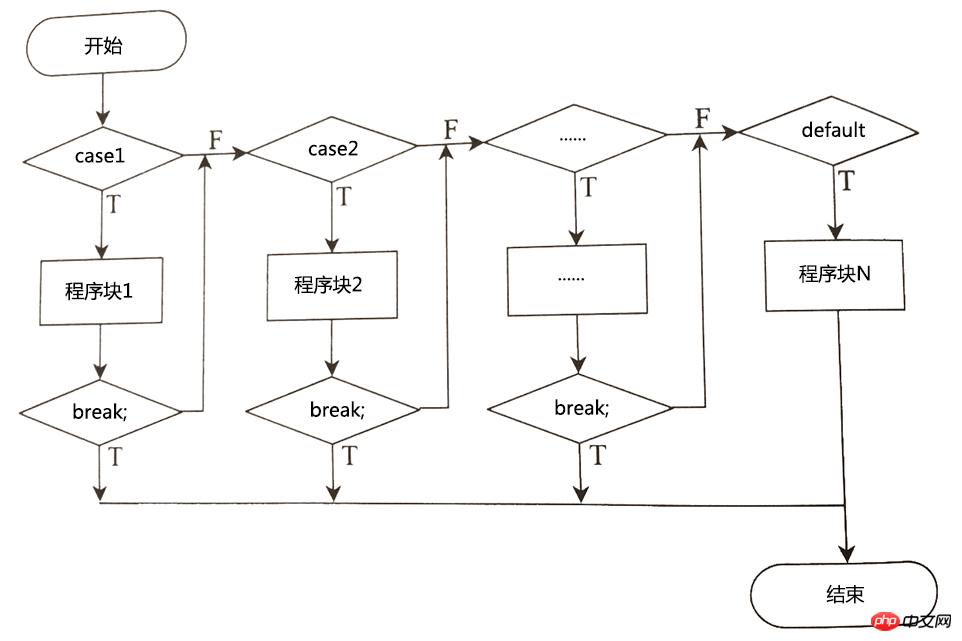
I explained to you a multiple-selection elseif statement earlier. Although this statement can make multiple judgments, when used, it requires writing a lot of if statements, which brings inconvenience to the readability of our program. In order to avoid If there are too many if statements and to improve the readability of our program, we can use switch multiple judgment statements. In this chapter we will introduce to you "switch statement".
The syntax of the switch statement:
switch (expr)
{
case expr1:
statement;
break;
case expr2:
statement;
break;
……
default:
statement;
}Detailed syntax explanation:
The switch statement is sequentially matched with expr1 in the case according to the value of expr.. Compare the values of .n. If the comparison is not equal, continue to look for the next case; if they are equal, execute the corresponding PHP statement until the switch statement ends or a break is encountered. There is a default at the end of the switch statement. default means that if no matching conditions are found in all cases, the statement after default is output, similar to the else statement.
 There is something to note here, that is, when the switch statement is executed, if a case statement segment that meets the requirements is found, it will still Then execute the following case statement. Then the following case statement does not meet the requirements. In order to avoid this waste of time and resources, we must add a break statement after each case statement segment. The break statement here means to jump out. The current switch statement.
There is something to note here, that is, when the switch statement is executed, if a case statement segment that meets the requirements is found, it will still Then execute the following case statement. Then the following case statement does not meet the requirements. In order to avoid this waste of time and resources, we must add a break statement after each case statement segment. The break statement here means to jump out. The current switch statement.
switch statement flow chart

##switch statement example
This example will be written first using the multiple selection elseif statement, and then using the switch statement we explained in this chapter. Compare the two ways of writing. You can see that this way of writing is simpler. The code is as followsHow to write the elseif statement
<?php
header("Content-type:text/html;charset=utf-8"); //设置编码
$dir='north';
if ($dir == 'west') {
echo '西';
} else if ($dir == 'east') {
echo '东';
} else if ($dir == 'north') {
echo '北';
} else if ($dir == 'sourth') {
echo '南';
} else {
echo '未知';
}
?>How to write the switch statement:
<?php
header("Content-type:text/html;charset=utf-8"); //设置编码
$dir='north';
switch ($dir) {
case 'west':
echo '西';
break;
case 'east':
echo '东';
break;
case 'north':
echo '北';
break;
case 'sourth':
echo '南';
break;
default:
echo '未知';
break;
}
?>
The above is the detailed content of Detailed explanation of 'switch' statement examples of PHP control statements. For more information, please follow other related articles on the PHP Chinese website!




